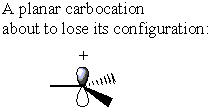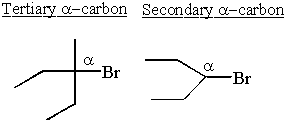Please wait while we process your payment
If you don't see it, please check your spam folder. Sometimes it can end up there.
If you don't see it, please check your spam folder. Sometimes it can end up there.
Please wait while we process your payment

By signing up you agree to our terms and privacy policy.
Don’t have an account? Subscribe now
Create Your Account
Sign up for your FREE 7-day trial
By signing up you agree to our terms and privacy policy.
Already have an account? Log in
Your Email
Choose Your Plan
Individual
Group Discount
Save over 50% with a SparkNotes PLUS Annual Plan!
 payment page
payment page
Purchasing SparkNotes PLUS for a group?
Get Annual Plans at a discount when you buy 2 or more!
Price
$24.99 $18.74 /subscription + tax
Subtotal $37.48 + tax
Save 25% on 2-49 accounts
Save 30% on 50-99 accounts
Want 100 or more? Contact us for a customized plan.
 payment page
payment page
Your Plan
Payment Details
Payment Summary
SparkNotes Plus
You'll be billed after your free trial ends.
7-Day Free Trial
Not Applicable
Renews July 16, 2025 July 9, 2025
Discounts (applied to next billing)
DUE NOW
US $0.00
SNPLUSROCKS20 | 20% Discount
This is not a valid promo code.
Discount Code (one code per order)
SparkNotes PLUS Annual Plan - Group Discount
Qty: 00
SparkNotes Plus subscription is $4.99/month or $24.99/year as selected above. The free trial period is the first 7 days of your subscription. TO CANCEL YOUR SUBSCRIPTION AND AVOID BEING CHARGED, YOU MUST CANCEL BEFORE THE END OF THE FREE TRIAL PERIOD. You may cancel your subscription on your Subscription and Billing page or contact Customer Support at custserv@bn.com. Your subscription will continue automatically once the free trial period is over. Free trial is available to new customers only.
Choose Your Plan
This site is protected by reCAPTCHA and the Google Privacy Policy and Terms of Service apply.
For the next 7 days, you'll have access to awesome PLUS stuff like AP English test prep, No Fear Shakespeare translations and audio, a note-taking tool, personalized dashboard, & much more!
You’ve successfully purchased a group discount. Your group members can use the joining link below to redeem their group membership. You'll also receive an email with the link.
Members will be prompted to log in or create an account to redeem their group membership.
Thanks for creating a SparkNotes account! Continue to start your free trial.
We're sorry, we could not create your account. SparkNotes PLUS is not available in your country. See what countries we’re in.
There was an error creating your account. Please check your payment details and try again.
Please wait while we process your payment

Your PLUS subscription has expired
Please wait while we process your payment
Please wait while we process your payment

Consequences of the Carbocation Intermediate
SN2 and E2 reactions have very stereospecific properties. They owe this to their concerted mechanisms. SN1 and E1 reactions are not concerted. They share a common carbocation intermediate. The carbocation intermediate ruins the stereospecificity of the reaction.
In the bimolecular reactions, electrons flow into the σ* C-LG antibond. The antibond points only directly opposite the C-LG bond. Since electrons can only come in from one direction, the bimolecular reactions are stereospecific.
On the other hand, the carbocation has no σ* C-LG antibond. Instead, the carbocation
loses its original shape to become planar. In this conformation electron density can be donated from
either side of the carbocation

While a SN2 reaction at a α-carbon stereocenter would result in inversion of configuration, a SN1 reaction on a similar stereocenter gives an equal mix of inversion and retention. This effect results in a racemic mixture.
The E1 reaction undergoes a similar effect, though it does retain Saytzeff's rule. Saytzeff's rule is founded on energetic stability, and thus is not affected by the random geometry introduced by the carbocation.
Polar, protic solvents favor SN1 and E1 reactions. The polar and protic properties of the solvent stabilize the carbocation and solvate the leaving group.
This may seem at odds with SN2's increased reactivity in polar, aprotic solvents. Protic solvents blunt the nucleophile. Since nucleophilicity is a key part of the reaction's rate- limiting transition state, protic solvents slow down SN2 reactions. For the unimolecular reactions, however, the rate-limiting step does not involve the solvent's nucleophilicity. Thus polar, protic solvents accelerate unimolecular reactions.
Carbocations are most stable next to electron donating groups. Alkanes are slightly electron donating.
This explains why SN1 and E1 reactions need a secondary or tertiary
α-carbon.

Some secondary α-carbocations take stability into their own hands and rearrange to form tertiary
carbocations.

Please wait while we process your payment

